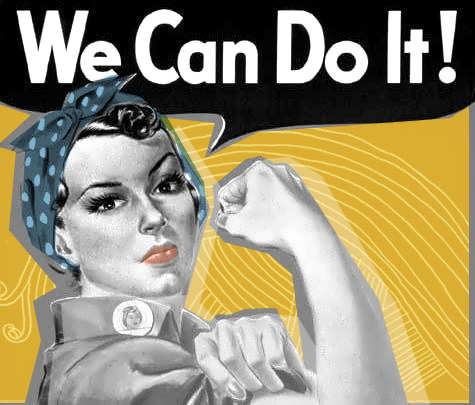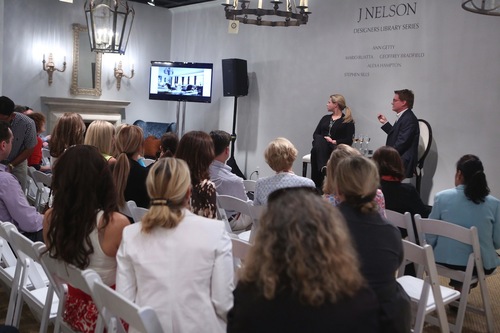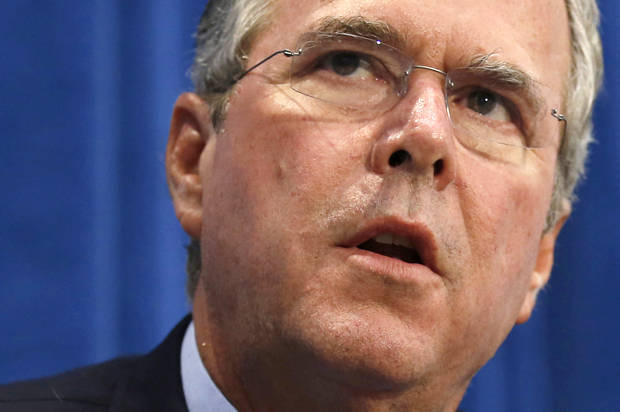Consider the following strategic dilemma. You are a superpower that hopes to convert other nations to principles you hold vital—these might be individual liberty, private property, and free markets. There is another superpower out there that is hoping to do the same thing, to persuade other nations to embrace its principles—for example, social equality, state ownership, and centralized planning.
One day, you realize that this rival superpower has been busy creating international organizations and staging world congresses and festivals in the name of peace and democracy, and inviting people from other nations to participate.
These organizations and festivals are fronts. Their membership, their programs, and the political positions they enthusiastically adopt are all clandestinely orchestrated by the rival superpower, which is pumping large amounts of money into them. What’s more, in your view that rival superpower is not a peace-loving democracy at all. It’s a totalitarian regime. Yet its slogans attract unwary writers and artists, intellectuals, students, organized labor—people who believe in world peace and international coöperation.
You believe in those things, too. But you think that the slogans are being used to advance your rival’s interests, one of which is to rob you of your superpowers. What do you do? Doing nothing is not an option. Remember, you are a superpower.
The obvious response is to create your own international organizations and sponsor your own world congresses and festivals, and use them to promote your interests. Sadly, however, you cannot do this in a public and transparent way. For it happens that your citizens are not all that taken with the ideals of world peace and international coöperation, and they would not be pleased to see you spend their tax dollars to support the kind of people who advance that agenda. They would prefer to see their tax dollars spent on defense. In fact, they would prefer for there to be no tax dollars at all.
There is also the problem that one of your principles as a superpower is the belief that governments should not interfere with the activities of voluntary associations, such as writers’ congresses and student groups. You don’t believe in fronts. This is a key point of difference between you and your rival superpower. So your hands appear to be tied.
Unless you could do it all in secret. Suppose you directed taxpayer dollars through back channels, disguised as gifts from private benefactors and foundations, to organizations that operated internationally, and that reached out to groups in other countries in the name of the principles you believe in. You would want to be sure that the people running those organizations either didn’t know where the money was coming from or could be trusted to keep it a secret. You might need to pull strings occasionally to get the right people in charge and the right positions enthusiastically adopted.
Wouldn’t that be like creating fronts? Sort of. But here’s the thing: fundamentally, everyone would be on the same page. They just might not be knowingly on the same page. No one would be forced to do or say anything. After you succeeded in stripping your rival of its superpowers, there would no longer be a need for secrecy. Until that day arrived, however, national security might demand this tiny bite out of the principle of transparency. The only people who could object would be people who were already on the wrong side.
After the Second World War, our superpower solved this dilemma in exactly this way and on exactly this line of reasoning. From the more or less official start of the Cold War, Harry Truman’s speech to Congress in March, 1947, announcing his policy “to support free peoples who are resisting attempted subjugation by armed minorities or by outside pressures”—that is, Communist aggression—the United States created fronts and secretly infiltrated existing nongovernmental organizations in order to advance American interests abroad.
Almost exactly twenty years after Truman’s speech, in February, 1967, the government’s cover was spectacularly blown by a college dropout. The dropout’s name was Michael Wood, and the operation he exposed was the C.I.A.’s covert use of an organization called the National Student Association. The revelation had a cascading effect, and helped to mark the end of the first phase of the Cold War.
The C.I.A. had its eye on the N.S.A. from the start—both were born in 1947, a few months after Truman’s speech—and the relationship gained steadily in strength and intimacy until the day the secret became public. Its story is now told in detail for the first time, in Karen M. Paget’s “Patriotic Betrayal” (Yale).
“Patriotic Betrayal” is an amazing piece of research. Paget has industriously combed the archives and interviewed many of the surviving players, including former C.I.A. officials. And Paget herself is part of the story she tells. In 1965, her husband, a student-body president at the University of Colorado, became an officer in the N.S.A., and, as a spouse, she was informed of the covert relationship by two former N.S.A. officials who had become C.I.A. agents.
She was sworn to secrecy. The penalty for violating the agreement was twenty years. Paget describes herself back then as “an apolitical twenty-year-old from a small town in Iowa,” and she says that she was terrified. Fifty years later, she is still angry. She has channelled her outrage into as scrupulous an investigation of the covert relationship as the circumstances allow.
One circumstance is the fact that a good deal of material is classified. Paget was able to fish up bits and pieces using the Freedom of Information Act. But most of the iceberg is still underwater, and will probably remain there. So there is sometimes an aura of vagueness around who was calling the tune and why.
The vagueness was also there by design. It was baked into the covert relationship. There was a lot of winking and nodding; that’s what helped people believe they were on the same page. But it means that much of the history of what passed between the C.I.A. and the N.S.A. is irrecoverable. Still, “Patriotic Betrayal” is a conscientious attempt to take the full measure of an iconic piece of Cold War subterfuge.
It’s a dense book. Readers will be glad for the three-page guide in the back to abbreviations and acronyms. (There are also nearly ninety pages of endnotes, with more references accessible online.) Organizationally, the N.S.A.-C.I.A. affair was quite complex. There were a number of quasi-independent parts—another reason, besides the secrecy, that it was hard to see what was really going on.
The parts included the World Federation of Democratic Youth, or W.F.D.Y., a Soviet front organization created right after the war; the International Union of Students, or I.U.S., formed at a world congress of students in Prague in 1946, with a Czech Communist elected president; and the N.S.A. itself, which was founded at a student convention in Madison, Wisconsin, in 1947, in order to represent the United States in the I.U.S.
The Madison convention also created an N.S.A. subcommittee on international affairs and gave it authority to deal with international issues. The key move was the separation of the main N.S.A. office, which was in Madison, from the international division, which was housed in Cambridge, Massachusetts. It was the Cambridge branch of the N.S.A. that received most of the C.I.A.’s funding and did most of the C.I.A.’s bidding. Madison was kept out of the loop.
In 1948, there was a Communist coup in Czechoslovakia, a crucial event in the hardening of postwar relations. When the I.U.S. refused to condemn the coup, the N.S.A. withdrew and set about forming a rival group, the International Student Conference, or I.S.C. These two organizations, the I.U.S. and the I.S.C., became superpower proxies in the looking-glass war that was the Cold War. Through the N.S.A., the C.I.A. tried to orchestrate what happened in the I.S.C., just as the I.U.S. was responsive to the demands of the Kremlin.
The N.S.A. was never a virgin. Paget reveals that, even before Prague, American students were subject to surveillance and scheming by three groups of grownups: the State Department, the F.B.I., and the Catholic Church. It can be forgotten how influential a role the Church’s highly disciplined anti-Communism played in Cold War affairs. The Holy Father took a personal interest in the danger of Communist infiltration of youth organizations, including the N.S.A.; the bishops kept a close eye on Catholic student leaders; and Catholics usually voted as a bloc in N.S.A. and I.S.C. meetings.
The Pope’s anti-Communism was too rigid for the C.I.A. The agency also had little use for J. Edgar Hoover, with whom the Church collaborated in investigating students’ backgrounds, or for Senator Joseph McCarthy and his hunt for Communists in the government. Agency politics—or, rather, the politics of agency policies—were farther to the left.
The N.S.A., for example, was a forthrightly liberal organization. Civil rights was part of the agenda early on. The N.S.A.’s second president (1948-49), James (Ted) Harris, was an African-American (and a Catholic). Its fourth president (1950-51) was the future civil-rights and antiwar activist Allard Lowenstein (not a Catholic). The N.S.A. helped found the Student Non-Violent Coordinating Committee, a principal organizer of the march from Selma that led to the passage of the Voting Rights Act, in 1965. And the N.S.A.’s politics were typical of most of the organizations in the C.I.A.’s covert network: they were socially progressive, anti-colonialist, and sometimes even socialist.
One customary explanation is that the people who ran covert operations at the C.I.A. from 1947 to 1967 were not right-wing jingoists. They were liberal anti-Communists, veterans of Roosevelt’s Office of Strategic Services, the forerunner of the C.I.A. They were good guys who despised the Soviet Union as a traitor to progressive principles.
If people held this belief about the C.I.A., the agency exploited it. C.I.A. officials used to tell N.S.A. students who were in the know—the agency’s term for them was “witting” (or “witty”)—that, while the State Department supported authoritarian dictatorships, the C.I.A. supported foreign students who were involved in democratic resistance and national liberation movements. This was supposed to make the N.S.A. students feel that they had bargained with the right devil.
The students were being misled. The C.I.A. is part of the executive branch. Its director reports to the President; its operations and expenditures are subject to congressional oversight. The director of the C.I.A. during the nineteen-fifties, Allen Dulles, was the Secretary of State’s brother. The notion that the C.I.A. was running its own foreign policy, or that it was a “rogue elephant,” as one senator later called it, is absurd.
After the revelations of the nineteen-sixties and seventies, when many of the C.I.A.’s undercover operations were exposed, people began talking about the agency as though it were some kind of underground cell, an organization with no accountability, up to its own dirty tricks. But a report on the C.I.A.’s covert operations made immediately after the 1967 revelations concluded that the agency “did not act on its own initiative.” In 1976, a more critical congressional report, which was never officially released, stated, “All evidence in hand suggests that the CIA, far from being out of control, has been utterly responsive to the instructions of the President and the Assistant to the President for National Security Affairs.”
It’s true that the C.I.A. did not always fully inform Administrations about what it was up to, but the agency had reason to believe that there were some things Administrations preferred not to know. Deniability is a crucial ingredient of covert operations. The C.I.A. used the N.S.A. to further the policies of the American government. If it had been found doing anything contrary to the wishes of the President, its plug would have been pulled very fast.
So what, exactly, was the N.S.A. useful for? This is where things get murky. According to Paget’s account, the N.S.A. was apparently not used for what the C.I.A. called “political warfare.” The agency did create a front organization called the Independent Research Service (inventing titles that are as meaningless as possible is part of the spy game) for the purpose of recruiting American students to disrupt Soviet-controlled World Youth Festivals in Vienna, in 1959, and Helsinki, in 1962. The person in charge was the future feminist Gloria Steinem, who knew perfectly well where the money was coming from and never regretted taking it. “If I had a choice I would do it again,” she later said.
 “What is friendship if not constant amateurish psychoanalysis?”Buy the print »
“What is friendship if not constant amateurish psychoanalysis?”Buy the print »
But that operation did not involve the N.S.A. Nor was the N.S.A. used only to promote American principles abroad, although that was part of the reason for funding it. The C.I.A. embedded agents in the N.S.A., and it worked behind the scenes to insure that pliable students got elected to run the association and that the desired policy positions got adopted. It took the extra precaution of starting up a covertly funded summer program, called the International Student Relations Seminar, and using it to groom future N.S.A. leaders. A number of N.S.A. members who went through the seminar went on to have careers at the agency.
Essentially, the N.S.A. functioned as a glove that concealed the American government’s hand and allowed it to do business with people who would never knowingly have done business with the American government. These people thought that they were dealing with a student group that was independent of the government. They had no idea that the N.S.A. was a front.
And what did this permit the C.I.A. to do? First, the N.S.A. was used as a cutout. The C.I.A. funnelled financial support to favored foreign-student groups by means of grants ostensibly coming from the N.S.A. Second, the N.S.A. was a recruitment device. It enabled the agency to identify potential intelligence sources among student leaders in other countries. And, third, N.S.A. members who attended international conferences filed written reports or were debriefed afterward, giving the C.I.A. a huge database of information.
The C.I.A. did not buy into the adage that the student leader of today is the student leader of tomorrow. It calculated that the heads of national student organizations were likely some day to become important figures in their countries’ government…
Source:




